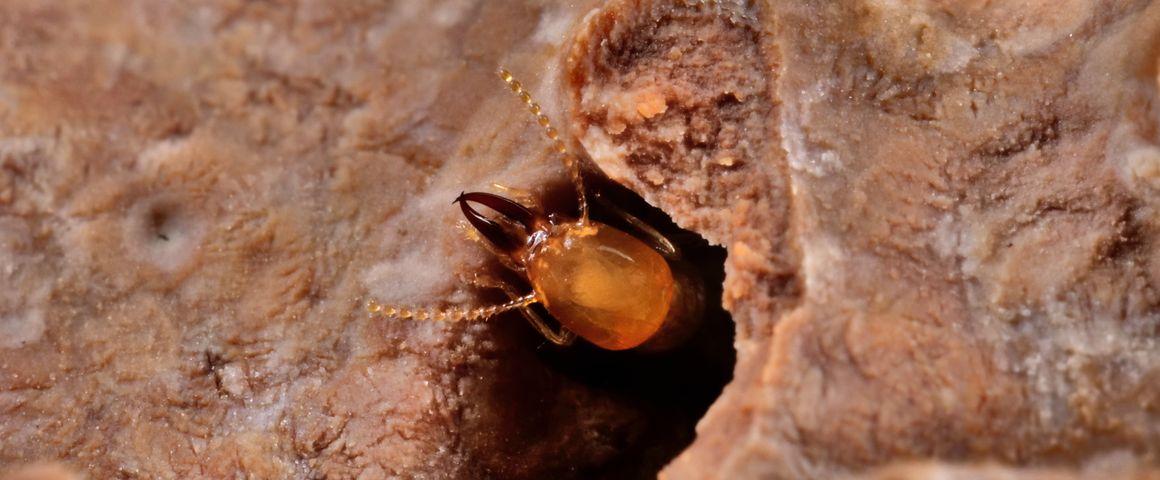Results & impact 10 October 2025
- Home
- Press area
- Press releases
- Termites and changes in the global carbon cycle
Climate: the expansion of termite range will affect the global carbon cycle

Asian subterranean termite (Coptotermes gestroi) consuming wood © Thomas Chouvenc
Forests play a critical role in the carbon cycle: they are the largest terrestrial carbon sink. Eight percent of their carbon stock is found in dead wood [1], which releases some of this carbon back into the atmosphere as it decays. What are the impacts of climate change on dead wood decomposition? To answer this question, an international team of more than 100 scientists assessed the effects of temperature and humidity on termites and fungi, organisms that break down dead wood. The study revealed for the first time that termites are highly sensitive to temperature variations and can tolerate low humidity levels, contrary to fungi. The rate of termite wood decomposition increases more than 6.8 times with every 10°C increase in temperature, whereas it only doubles for fungi.
”Termites are mound-building insects that live in colonies”, says Jacques Beauchêne, a dendrologist (wood expert) at CIRAD in French Guiana and co-author of the study. “They have developed mechanisms that enable them to withstand lower humidity levels than fungi, for example by digging towards groundwater.” The study shows that humidity rates have little impact on the rate of termite colony decomposition. Only the wood foraging phase declines with higher rainfall. This adaptation enables termites to be highly effective in seasonal forests, savannahs and subtropical deserts. “Our results confirm that there is competition between fungi and termites for resources in humid tropical forests”, adds Jacques Beauchêne. “But we were not expecting the increased virulence of termites in hot arid zones”.
What are the implications of this discovery? Because of climate change, hot arid zones are set to expand. The scientists compared their findings with climate change models (CMIP6), and determined that irrespective of the pathway of greenhouse gas emissions, termite range will expand across tropical and subtropical regions by 2050. This finding has major implications for the carbon cycle in the future. A recent study has shown that termites are currently responsible for the decomposition of almost a third of all dead wood globally. “Our models show that termites will play an increasingly important role in the carbon cycle in the future”, says Jacques Beauchêne. However, the study does not quantify the impacts on forest carbon stocks.
This study, coordinated by the University of Miami, is the result of a vast research network. An identical experimental system was replicated in 133 sites across six continents, including CIRAD’s experimental plot in Paracou in French Guiana. The diversity of the sites provided valuable information concerning a wide variety of habitats and climates, ranging from humid tropical forests (in particular in French Guiana) to subtropical deserts. “This study is the first to compile data obtained in dry zones”, says Jacques Beauchêne. “It shows the huge potential of these new network research methods, based on low-cost experimental systems”.
References
Termite sensitivity to temperature affects global wood decay rates | Science, 23 septembre 2022
[1] Pan, Y. et al. A large and persistent carbon sink in the world’s forests. Science 333, 988–993 (2011).



























